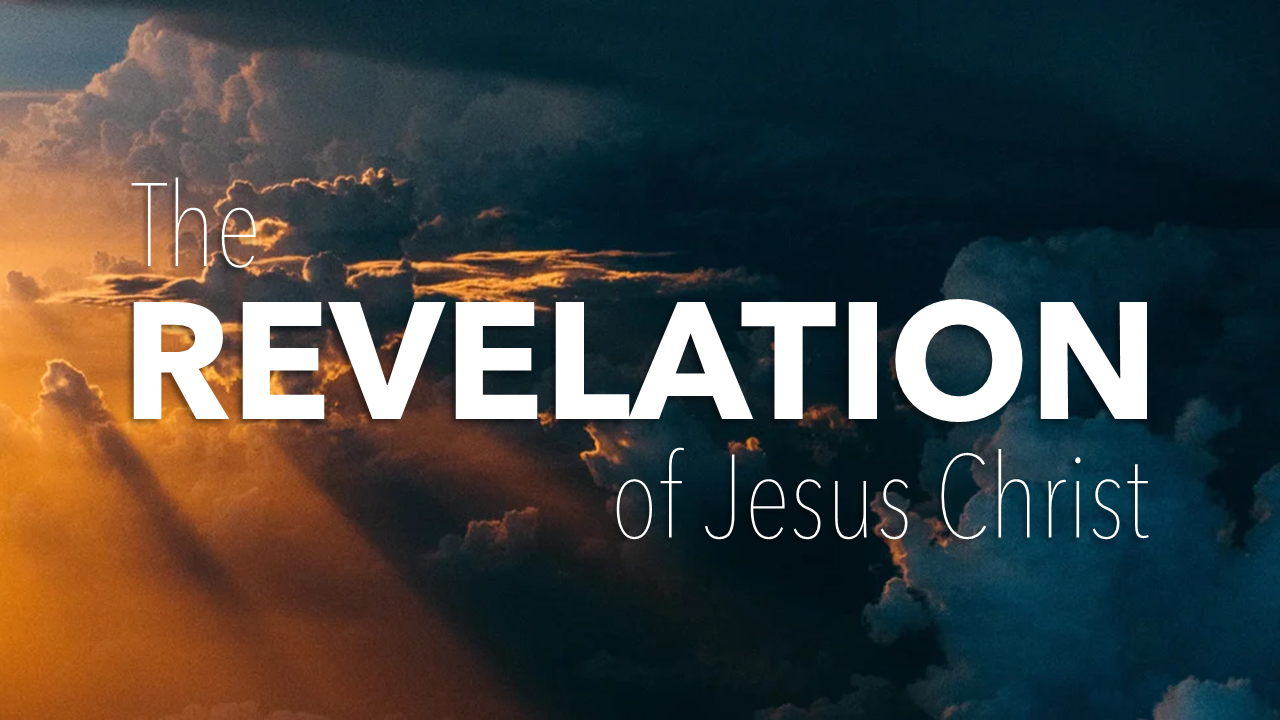Announcing the Bowl Judgments - At Last
Revelation 15:1-8
The dramatic pause is over. The moment we’ve all been waiting for since the end of Rev 11 has arrived. The bowl judgments are here at last! Almost, anyway.
- Rev 15:1-8 introduces the seven bowl judgments with a heavenly vision, just as John introduced the seven seal (Rev 6:1-17) and trumpet judgments (Rev 8:2-5).
- This introduction describes three scenes in heaven, each beginning with “and I saw/looked” (Rev 8:1, 2, 5).
From a literary standpoint, John has postponed a description of these terrible events long enough. This final series of judgments signals the final, great crescendo that will climax with the Battle of Armageddon and bring the Tribulation to a close.
John saw an overwhelming scene. (Rev 15:1)
“Another sign” links back to the start of this lengthy intermission which John launched in Rev 12:1, 3.
“Great and marvelous” means John saw something that was not only amazing and astonishing but also ominous and terrifying.
John saw seven angels holding the seven final plagues from God. Plagues means
“to blow, strike, or wound” and is how Scripture describes God’s acts of judgment on Egypt when he freed the Hebrew people from slavery through Moses. With these seven plagues, God will free his people from Satan’s oppression. Seven strikes and the wicked of the world will be out.
“The wrath of God is complete” portrays these judgments not only as the completion of this threefold series of judgments (seals, trumpets, bowls) but as the maximum, unhindered expression of God’s anger towards sin. It’s as though John is saying, “You haven’t seen nothing yet.” What’s about to occur will be the most overwhelming display of God’s wrath known to mankind. He will unleash his uninhibited indignation towards evil on an unprecedented scale.
John heard some magnificent music. (Rev 15:2-4)
This “something like a sea of glass” appeared before in John’s first glimpse at God’s heavenly throne room before these series of judgments began (Rev 4:6).
- This doesn’t mean that it was a sea of water or plane of glass, but that this was the best words John could find to describe this otherworldly scene. Whatever this phenomenon may have been, it was vast (like a sea) and clear (like glass).
- In Rev 4:6, this plain was clear “like crystal,” but here it is “mingled with fire.” This difference indicates an intensification from the beginning of this series of judgments to the end. This space surrounding God’s throne is no longer placid but ablaze.
More importantly, John also saw a large chorus of people who had persevered through the trials of the Tribulation as faithful, loyal followers of the Lamb.
- These had not succumbed to the high-pressured economic and religious tactics of the Antichrist and were martyred as a result.
- They were holding “harps of God,” which are most likely either given by God or dedicated to God for worshiping him.
- These harps also allude to Old Testament (OT) elements, as harps and trumpets (also prominent in Rev) were prominent features of OT tabernacle and temple worship.
- This symphonic choir of Tribulation martyrs either stood on or beside the fiery, glassy expanse. Beside is more likely because it resembles how Israel praised God on the other side of the Red Sea (not on the Red Sea) after he delivered them from Egypt.
OT imagery carries over into Rev 15:3 when John mentions “the song of Moses.” After the Hebrew people had passed through the Red Sea and God had drowned Pharaoh’s army in the same, Moses led them in a triumphant song of praise to God (Exo 15:1-18).
- The song of the Tribulation martyrs does not repeat the words of this song per se, but it does reflect similar themes and follow a similar pattern of exalting God after an astonishing deliverance.
- The song occurs for a similar reason, too. In the Exodus, God had led his people to victory through his servant, Moses. In the Tribulation, he will lead his people to victory through his ultimate servant, the Lamb.
This song repeats the phrase “great and astonishing” from Rev 15:1, which also happens to be terms the OT uses, both in the Pentateuch and Psalms, to describe God’s divine activity and intervention in the affairs of this world. His works are not just amazing and astonishing, but ominous and terrifying as well.
John saw the bowls of God’s wrath revealed. (Rev 15:5-8)
This third scene in Rev 15 returns to the first (in Rev 15:1) by focusing again on the seven angels holding the seven plagues.
- They were positioned within the innermost space in the heavenly temple, at the epicenter of God’s presence (illustrated by the Ark of the Covenant in the holiest place of the OT tabernacle and temple, alluded to here in Rev 15:5).
- The bright, white clothing and golden sashes portray them as high-ranking emissaries of God with an important mission to fulfill (Rev 15:6).
One of the four unusual, angelic creatures of in closest proximity to God’s throne reappears. These beings appeared frequently prominently in John’s visions of God’s throne room in Rev 4-5, and they also appeared in the seal judgments (6:1-8) and two other times since then (Rev 7:11; 14:3).
Now one of these creatures reappears to give each of these seven, high-ranking angels a ceremonial bowl filled to the brim with God’s wrath. It will be their job, one at a time, to pour out each bowl onto the Earth (Rev 16:1).
God, “who lives forever and ever,” is unique from all other persons. Unlike all other so-called gods, world rulers, and even Satan, he is eternal. This attribute qualifies him to be the sovereign ruler over all things, the final judge of all things, and the one whose anger is truly justified in every way. He’s seen everything and exercised longsuffering to the greatest possible degree. Whatever wrath he is about to express will be entirely justified.
Throughout the OT, smoke prominently occurred as a manifestation of God’s concentrated presence, whether on Mt. Sinai, in the tabernacle, in the Temple, and even in God’s heavenly temple (Isa 6:1-4). This phenomenon emphasizes God’s transcendence (he is unapproachably high above all things), sovereignty (he reigns over all things), and breathtaking majesty – his glory is awe-inspiring.
As the smoke of God’s glory billows and surges from his heavenly temple, the seven angels prepare to pour out God’s greatest expression of wrath ever witnessed.
Key Takeaways
Anger is an appropriate response to sin.
The fact that God himself feels and expresses anger, indignation, and wrath reveals that not all anger is sinful anger. In fact, Psa 7:11 says, “God is angry with the wicked every day.” Evil is so intolerable and is such an offense to a holy God that it deserves, even requires us to be angry as well.
To believers, Paul says, “Be angry, and do not sin” (Eph 4:26). So, even believers not only may be but should be angry at that which is truly evil. We should be sure, however, that what angers us is for God’s sake, not ours, and is that which is truly evil, not that which is merely difficult, inconvenient, painful, or uncomfortable.
We can refrain from expressing wrath knowing God’s wrath will come.
To believers, Paul also says, “Do not let the sun go down on your wrath” (Eph 4:26). So, we should not allow our anger to carry over from day to day. While we should not be legalistic about this (as in releasing our anger ritualistically every day before midnight), we should ensure that we learn to give our anger over to the Lord rather than letting our anger take root and transform into seething bitterness and violent outbursts of rage.
God’s wrath is perfect and pure, and it is also under perfect control. God does not respond to sinful behavior with violent outbursts of rage, but he refrains from expressing his anger until the perfect time has come. That time will occur at the end of the Tribulation, and when that happens, his wrath will be complete and just in every way. Though we should feel anger towards sin, we should not let that anger boil over into violent behavior. We can give our anger over to the Lord knowing that his wrath will occur at the perfect time.
God has already poured out his wrath – on the Lamb.
As we read about these climactic and terrible plagues through which God will strike the Earth in his wrath, we should remember that God has already poured out his wrath on the Lamb once before. God struck him for our sins at the cross (Isa 53:4-6).
This is a remarkable difference between Christ and the Antichrist. Christ suffered God’s wrath for our sins in full on our behalf as our substitute and offers true salvation and forgiveness instead. The Antichrist can do no such thing. He invites God’s wrath both on himself and the world through his wicked behavior and is entirely unable to save anyone.
If you feel as though God’s expressions of wrath on the world are cruel, harsh, or unjust, remember that Christ has experienced this wrath himself for you in your place. If anyone has the right to express holy wrath, it is the one who first experienced that wrath in our place.
We should celebrate God’s deliverance through song.
Once again, we find music and worship at center stage in Revelation, this time by believers who’ve endured excruciating suffering and died for their faith. Such music should not be relegated to heaven and the Tribulation period, though, because as John points out, it’s the same kind of music that the Hebrew people sang when God delivered them from slavery in Egypt.
When you praise God through song in your church’s weekly gatherings for worship, do you “go through the motions,” or does your singing (and instrumental playing) reflect genuine awe, enthusiasm, and gratitude for the Savior. Does your music reflect the following focus and themes?
- Admiring the awe-inspiring nature of God’s works
- Acknowledging God as Lord and Almighty
- Celebrating God’s justice and truth
- Exalting God as King overall
- Expressing a heartfelt fear and reverence for him
- Focusing on his exclusive holiness
- Longing for the day when all nations will worship him at last
- Looking forward to the day when his judgments will be complete

